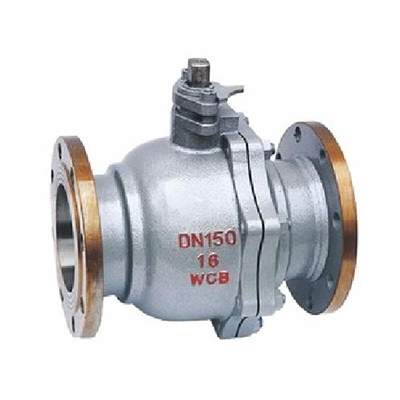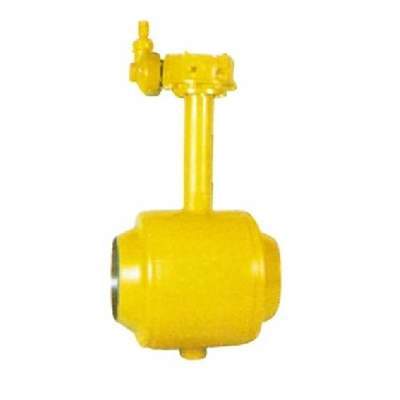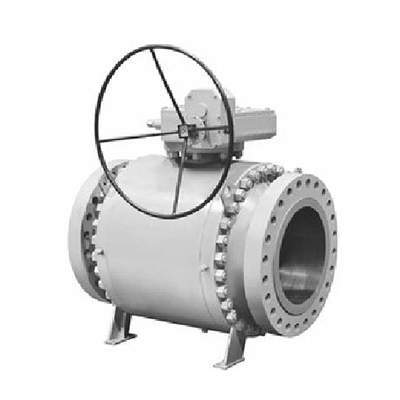Welcome to My Blog!
Before we dive into the content, I’d love for you to join me on my social media platforms where I share more insights, engage with the community, and post updates. Here’s how you can connect with me:
Facebook:https://www.facebook.com/profile.php?id=61563865935136
Now, let’s get started on our journey together. I hope you find the content here insightful, engaging, and valuable.
Introduction

Ball valves are essential components in various industrial and commercial applications, regulating fluid flow with precision and reliability. Understanding the different types of ball valves is crucial for selecting the right valve for specific needs. As a leading manufacturer, Fanlei provides a diverse range of high-quality ball valves designed to meet the demands of various industries. This guide explores the different types of ball valves, their characteristics, and applications, helping you make informed decisions.
Understanding the Basics of Ball Valves
A ball valve operates by using a hollow, perforated ball to control fluid flow. When the ball’s bore is aligned with the flow, the valve is open, allowing fluid to pass through. When the ball is rotated 90 degrees, the solid part blocks the flow, closing the valve. The simplicity of this design offers quick shut-off and minimal pressure drop.
Different Types of Ball Valves Based on Body Design

One-Piece Ball Valves
One-piece ball valves are designed for cost-effectiveness and are typically used in low-pressure applications. They are compact and have a simple design, making them easy to install. However, they are not serviceable, meaning that if there is a problem, the entire valve needs to be replaced.
Two-Piece Ball Valves
Two-piece ball valves offer a balance of cost and serviceability. They consist of two body pieces held together by bolts. This design allows for easier maintenance and repair compared to one-piece valves. They are suitable for medium-pressure applications and offer good sealing performance.
Three-Piece Ball Valves
Three-piece ball valves are designed for high-pressure and high-temperature applications. Their design allows for easy in-line maintenance and repair without removing the valve from the piping system. They are often used in critical applications where reliability and ease of maintenance are paramount. Fanlei’s three-piece types of ball valves are engineered for demanding industrial environments.
Types of Ball Valves Based on Bore Size
Full Port Ball Valves
Full port ball valves have a bore diameter equal to the pipe’s inner diameter, minimizing pressure drop and maximizing flow capacity. They are ideal for applications where unrestricted flow is essential, such as pipelines and large-volume fluid transfer.
Reduced Port Ball Valves
Reduced port ball valves have a bore diameter smaller than the pipe’s inner diameter, resulting in a slight pressure drop. They are more cost-effective than full port valves and are suitable for applications where flow restriction is not a significant concern.
V-Port Ball Valves
V-port ball valves have a V-shaped opening in the ball, providing precise flow control. They are commonly used in applications requiring throttling or regulating fluid flow, such as chemical processing and HVAC systems.
Types of Ball Valves Based on Connection Type
Threaded Ball Valves
Threaded ball valves use threaded connections, such as NPT or BSP, for easy installation. They are widely used in low-pressure applications and are available in various materials to suit different fluids and environments.
Flanged Ball Valves
Flanged ball valves use flanges for connection, providing a robust and leak-free seal. They are suitable for high-pressure and high-temperature applications and are commonly used in industrial pipelines and processing plants.
Welded Ball Valves
Welded ball valves are designed for permanent installations where leakage is a critical concern. They are welded directly to the piping system, providing a strong and reliable connection. Fanlei’s welded types of ball valves are known for their durability and leak-free performance.
Types of Ball Valves Based on Material
Stainless Steel Ball Valves
Stainless steel ball valves offer excellent corrosion resistance and durability, making them suitable for harsh environments and aggressive fluids. Fanlei’s stainless steel ball valves are designed to provide long-lasting performance in demanding applications.
Brass Ball Valves
Brass ball valves are cost-effective and suitable for low-pressure applications with non-corrosive fluids. They are commonly used in plumbing and HVAC systems.
PVC Ball Valves
PVC ball valves are lightweight and corrosion-resistant, making them ideal for chemical processing and water treatment applications. They are cost-effective and easy to install.
Types of Ball Valves Based on Actuation
Manual Ball Valves
Manual ball valves are operated by hand using a lever or handle. They are simple, reliable, and cost-effective, suitable for applications where manual control is sufficient.
Actuated Ball Valves
Actuated ball valves use pneumatic or electric actuators for remote or automated control. They are ideal for applications requiring frequent operation or precise control, such as automated processing plants.
Application-Specific Types of Ball Valves
Cryogenic Ball Valves
Cryogenic ball valves are designed for extremely low-temperature applications, such as handling liquefied gases. They are made from materials that can withstand cryogenic temperatures and maintain sealing performance.
High-Pressure Ball Valves
High-pressure ball valves are designed to handle high-pressure fluids, such as hydraulic systems and oil and gas pipelines. They are made from high-strength materials and feature robust designs.
High-Temperature Ball Valves
High-temperature ball valves are designed to handle high-temperature fluids, such as steam and thermal oil. They are made from materials that can withstand high temperatures and maintain sealing performance.
Comparing Different Types of Ball Valves
| Feature | One-Piece Ball Valves | Two-Piece Ball Valves | Three-Piece Ball Valves | Full Port Ball Valves | Reduced Port Ball Valves |
|---|---|---|---|---|---|
| Serviceability | Not Serviceable | Partially Serviceable | Fully Serviceable | Varies | Varies |
| Pressure Rating | Low | Medium | High | Varies | Varies |
| Cost | Low | Medium | High | Higher | Lower |
| Application | Low-pressure, general use | Medium-pressure, industrial | High-pressure, critical applications | Unrestricted flow | Restricted flow |
| Maintenance | Replacement only | Easier than One-Piece | Easy in-line maintenance | Varies by design | Varies by design |
Fanlei’s Commitment to Quality

Fanlei is committed to providing high-quality types of ball valves that meet the diverse needs of our customers. Our valves are designed and manufactured using advanced technologies and stringent quality control measures to ensure reliability and performance. We offer a wide range of ball valves in various materials, sizes, and configurations to suit different applications.
Conclusion
Selecting the right types of ball valves is crucial for ensuring efficient and reliable fluid control. Understanding the different types of ball valves, their characteristics, and applications can help you make informed decisions. Fanlei, with its strong research and development capabilities, provides a wide variety of valve solutions tailored to your specific requirements. We pride ourselves on the quality of our products and the satisfaction of our customers. For reliable and high-performance valves, contact us today to discuss your needs and discover how Fanlei can assist you with your project.
FAQ
How do I choose the right ball valve?
Consider the application’s pressure, temperature, fluid type, flow rate, and connection type. Consult Fanlei’s experts for personalized advice based on your specific requirements.
What are the main types of ball valves?
The main types of ball valves include one-piece, two-piece, three-piece, full port, reduced port, V-port, threaded, flanged, welded, stainless steel, brass, PVC, manual, and actuated ball valves.
What are the benefits of using stainless steel ball valves?
Stainless steel ball valves offer excellent corrosion resistance, durability, and high-temperature performance, making them suitable for harsh environments.
What is the difference between full port and reduced port ball valves?
Full port ball valves have a bore diameter equal to the pipe’s inner diameter, minimizing pressure drop. Reduced port ball valves have a smaller bore, resulting in a slight pressure drop.
